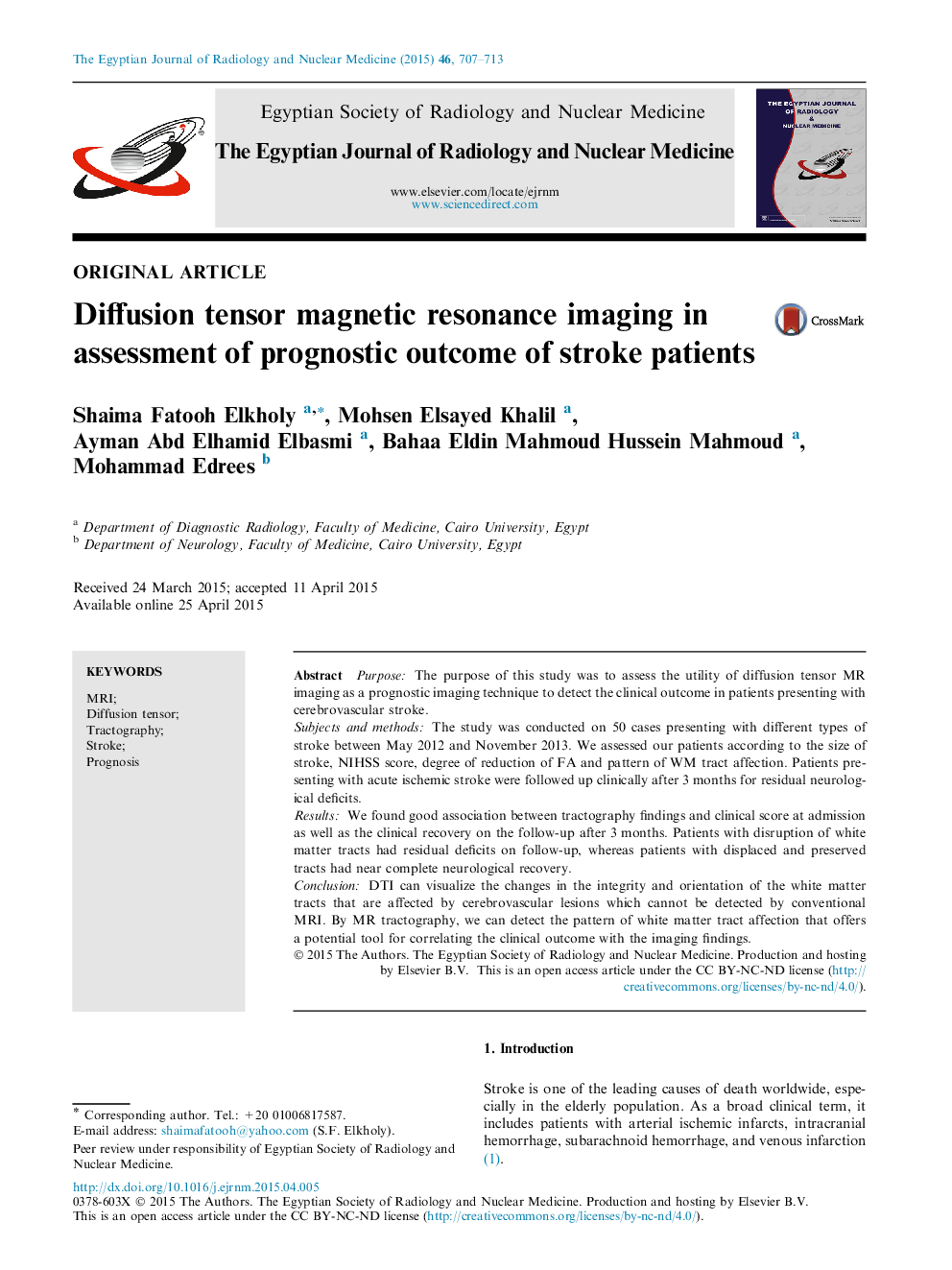| Article ID | Journal | Published Year | Pages | File Type |
|---|---|---|---|---|
| 4224060 | The Egyptian Journal of Radiology and Nuclear Medicine | 2015 | 7 Pages |
PurposeThe purpose of this study was to assess the utility of diffusion tensor MR imaging as a prognostic imaging technique to detect the clinical outcome in patients presenting with cerebrovascular stroke.Subjects and methodsThe study was conducted on 50 cases presenting with different types of stroke between May 2012 and November 2013. We assessed our patients according to the size of stroke, NIHSS score, degree of reduction of FA and pattern of WM tract affection. Patients presenting with acute ischemic stroke were followed up clinically after 3 months for residual neurological deficits.ResultsWe found good association between tractography findings and clinical score at admission as well as the clinical recovery on the follow-up after 3 months. Patients with disruption of white matter tracts had residual deficits on follow-up, whereas patients with displaced and preserved tracts had near complete neurological recovery.ConclusionDTI can visualize the changes in the integrity and orientation of the white matter tracts that are affected by cerebrovascular lesions which cannot be detected by conventional MRI. By MR tractography, we can detect the pattern of white matter tract affection that offers a potential tool for correlating the clinical outcome with the imaging findings.
